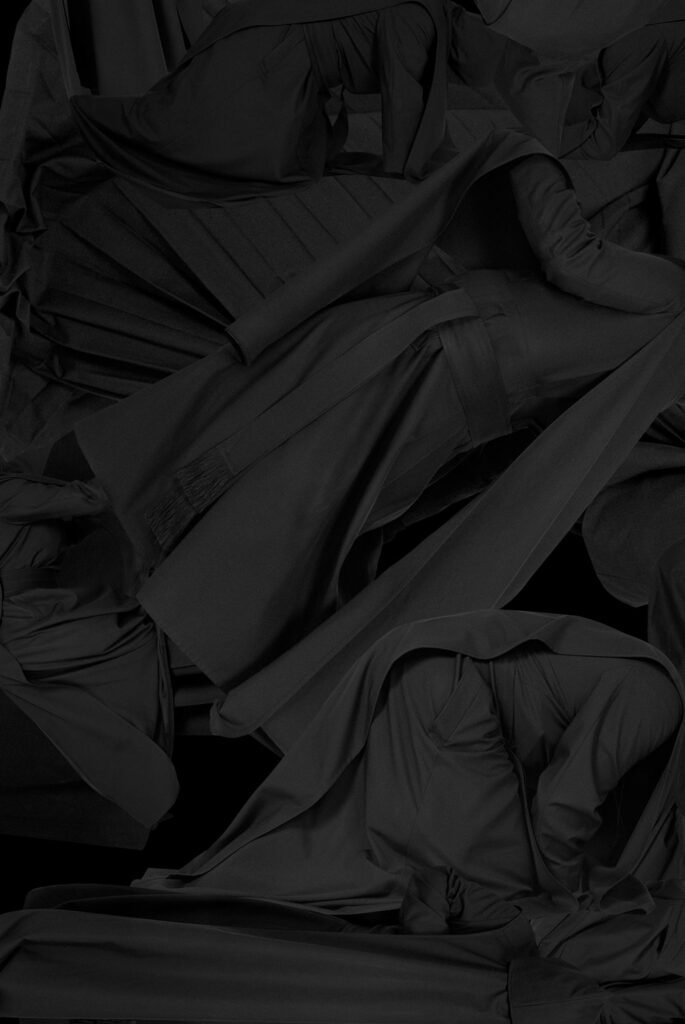Reflection & Distraction
Anita Witek, Judith Huemer, Markus Schinwald
Anita Witek
In her photographs, Anita Witek explores the question of how an exhibitionism is stored that invites a worldwide audience to be present throughout the day, during awkward gymnastic exercises that are supposed to protect against obesity, while sleeping and eating breakfast, while thinking and showering. Has Gabgab’s behaviour become more defensive under constant observation? Does she still allow herself to pick her nose? I’ve never caught her doing that. The intrusion into other people’s flats, the looking around in private rooms, the zapping from flat to flat, the security of the voyeurs, the uncertainty of the observed and the traces that people leave in them are links that activate Anita Witek. Glimpses through narrow slits spread out spaces on a surface in front of us. The spaces dominate the few body fragments and reduce them to traces. The emphatic cropping is reminiscent of the stills that webcams record at regular intervals of their operators walking by and put online again and again. (From: Ruth Horak in: Publicdomain, 3rd Austrian Triennial on Photography, p.262)

Judith Huemer
Judith Huemer was invited to design a work for the Benedictine Abbey of Admont, and the result was the series “overall”. The bodies of the actors do not model more or less tight-fitting fabrics here, but they disappear into them, or more precisely: they merge with them. The richly falling folds are reminiscent of Gothic carvings and monastic rules, which were intended to promote the internalisation necessary for meditation through disembodiment. Dark grey, the figures of monks emerge from the black of the background; completely wrapped in their cowls, the skin of their bodies, hands and face remain hidden. Because the searching gaze of this kind has no answer in the picture, it finds its goal in the slow and careful observation of surfaces, in the complexly discarded textile fabric as well as in those shimmering and smooth ones of the photographic prints: the richness of the low-contrast photographs is revealed in their shadowy details. The postures of the monks are only partially self-contained. Some remain in poses of immersion; others perform sweeping gestures and thus give the images spatiality and depth, as well as the sculptural bodies their peculiar weight: without being weightless, they float in the surface of the picture, cover each other without touching, stand for themselves and yet are not isolated from each other. The same goes for the photos themselves: They have no top and no bottom, and because they are contiguous, there is no clear centre regulating the reading of the image. Documentary images, which are centred on actions, perspectives or viewpoints and are committed to the supposedly illusionistic character of the medium, usually pass over this accuracy in a fleeting way; pictures like Huemer’s, however, uncover views again in the precision of photography. (Friedrich Tietjen)


Markus Schinwald
Markus Schinwald’s works revolve around the constructional character of the corporeal. “The body is a constantly actualised place where the subject is simultaneously constituted in its identity and its instability and transversality. The fact that subjectivity and the world reflect each other and are constituted through them is not a characteristic of our epoch. What is specific to our epoch are the conditions under which this happens: “the logic of representation that determines our view of objects and the shape that we ourselves take, as well as the value that a visual field, now organised in a more complex way, attaches to these representations”. In any case, Markus Schinwald’s works seem to constantly take up and raise, update and, above all, contextualise these complexes of themes surrounding the body as a cultural construct. From “Sneakers”, “Low Heels” and “Flatfooters” (1998) to “Dictio Pii” (2001) and “Contortionists” (2003) to the film “1st Part Conditional” (2004), the obsession with the corporeal as a materiality of the individual and the psychic is evident. These are projects about fashion, sculptural reworkings of fashionable consumer articles, especially shoes, on the one hand, and filmic works on the other – whereby the unwearability of fashion or the sometimes adventurous movements of the bodies in the films seem to refer to a fundamental disorder. This disorder characterises the people as well as the objects: “On the one hand, it is dysfunctional set pieces of fashion (shoes without heels or as a heel to be buckled around the foot) that force the potential wearers into almost impossible postures and movements; on the other hand, it is the autistic rituals of the cinematic protagonists in the face of an Other that seems unattainable that indicate this disorder.” (From: Reinhard Braun, Markus Schinwald – “Bilder als Versuchsanordnungen”; in: Camera Austria No. 88/2004, p.45)
